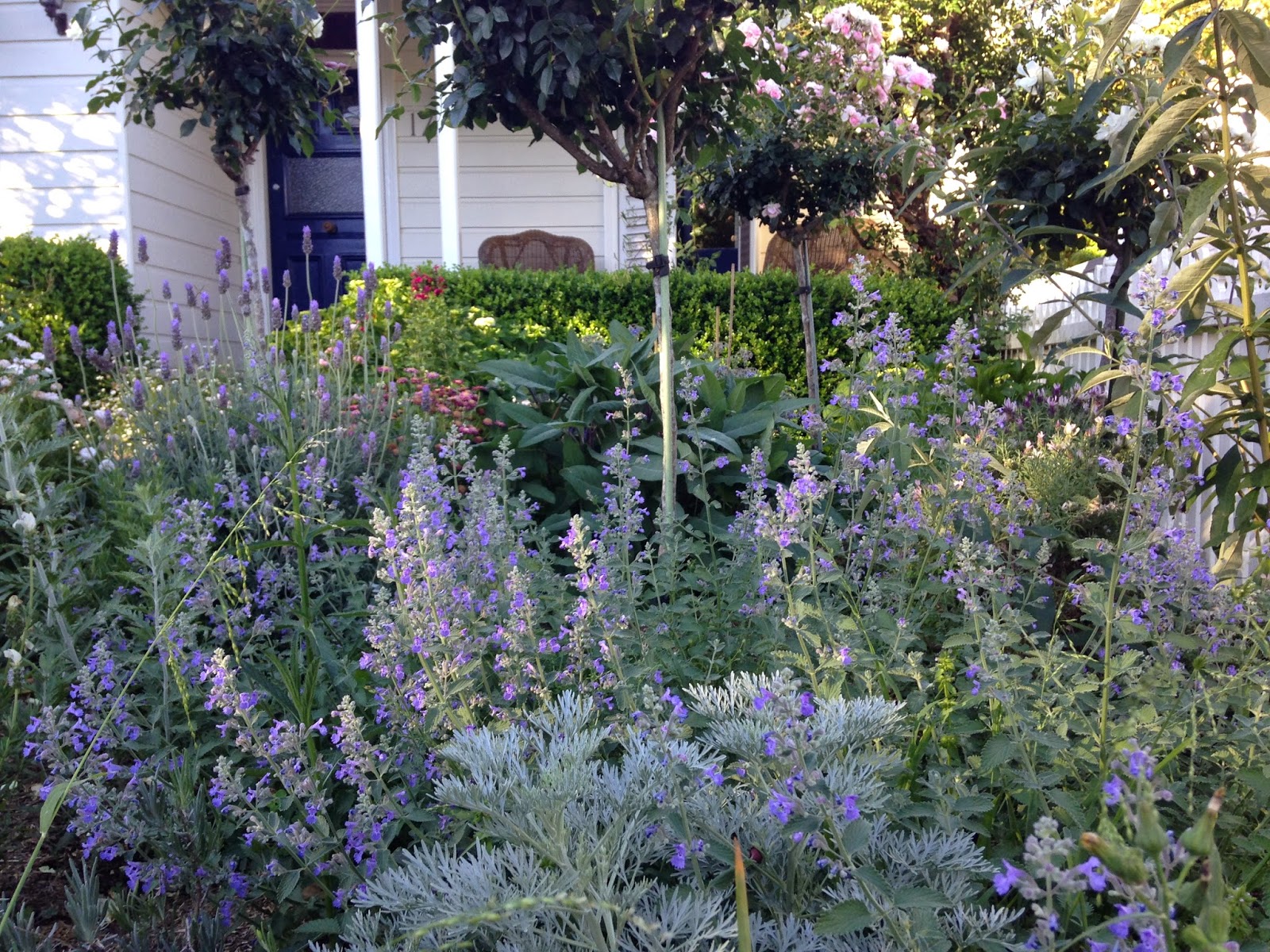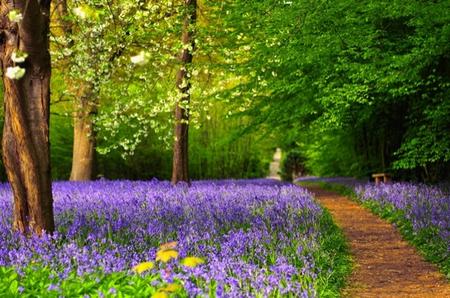Growing up in Mosman, nasturtiums (
Tropeolum majus) were something that just
were in the landscape. Tumbling over garden walls and scrambling over the ground in parks and gardens, I never thought of anyone actually planting them, let alone that there were different cultivars. The round leaves are a nice, peppery addition to a salad and the flowers are pretty and edible, too. When I was a child I loved sucking the nectar from the base of the flowers and eating the occasional leaf when I was playing in the garden.
They self seed easily, hence thinking they were a weed as a child. Actually, they probably are classed as a weed. Nasturtiums are originally from South America.
Here is a blue violet, with lobelia and borage in the background. Nasturiums would look great with these colours, but I don't allow any yellow or orange in that part of the garden except for the odd daffodil.
The sun is finally peaking out after a whole weekend of rain. I managed to weed the back rose bed where the nasturtiums grow, along with some blue Triteleia that I bunged in in about April 2013 after I found the bulbs neglected and sprouting in a bag in the potting area.
Next week I hope to remove the grass from the base of the apple and citrus trees, fertilise them and mulch them and you never know, maybe we'll be eating our own apples in autumn.




























